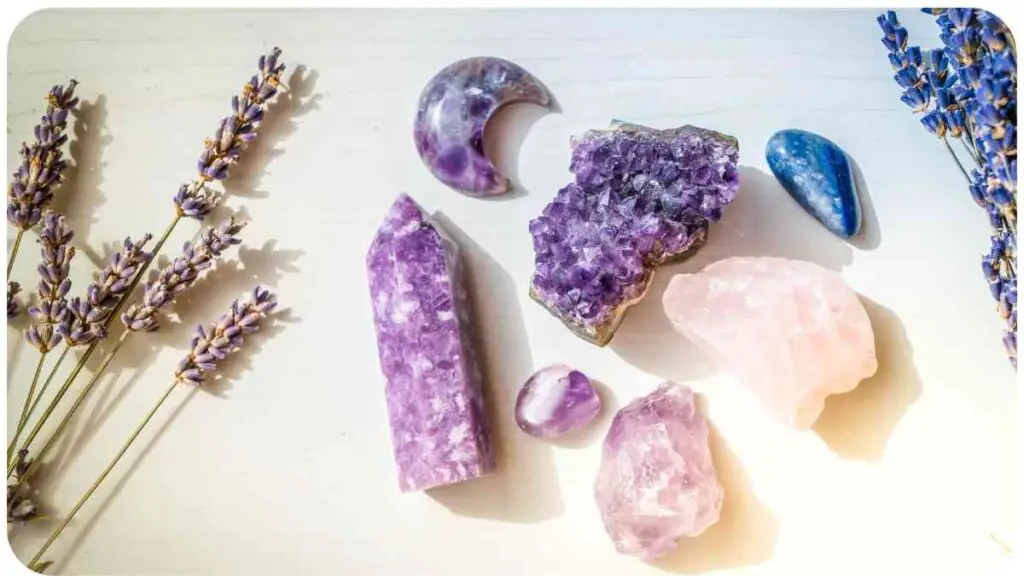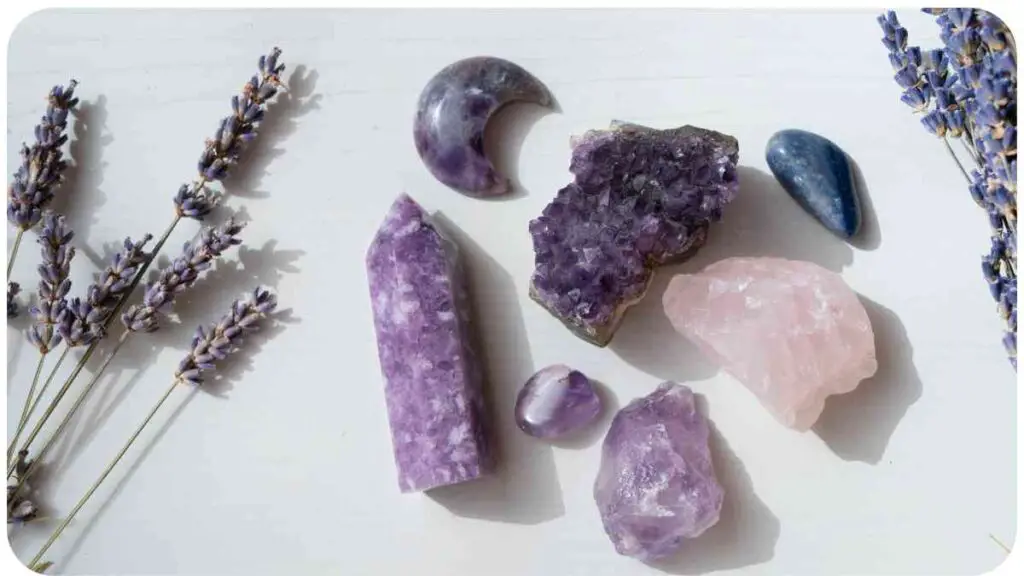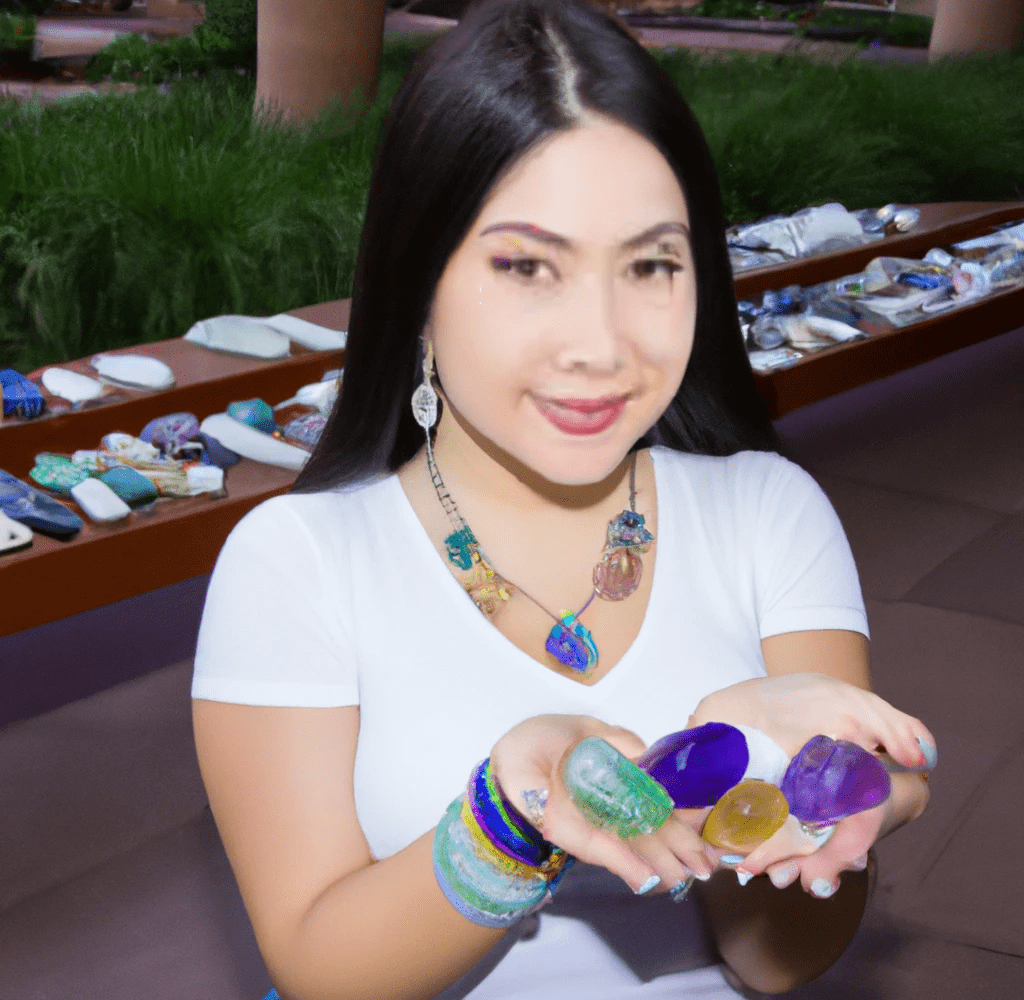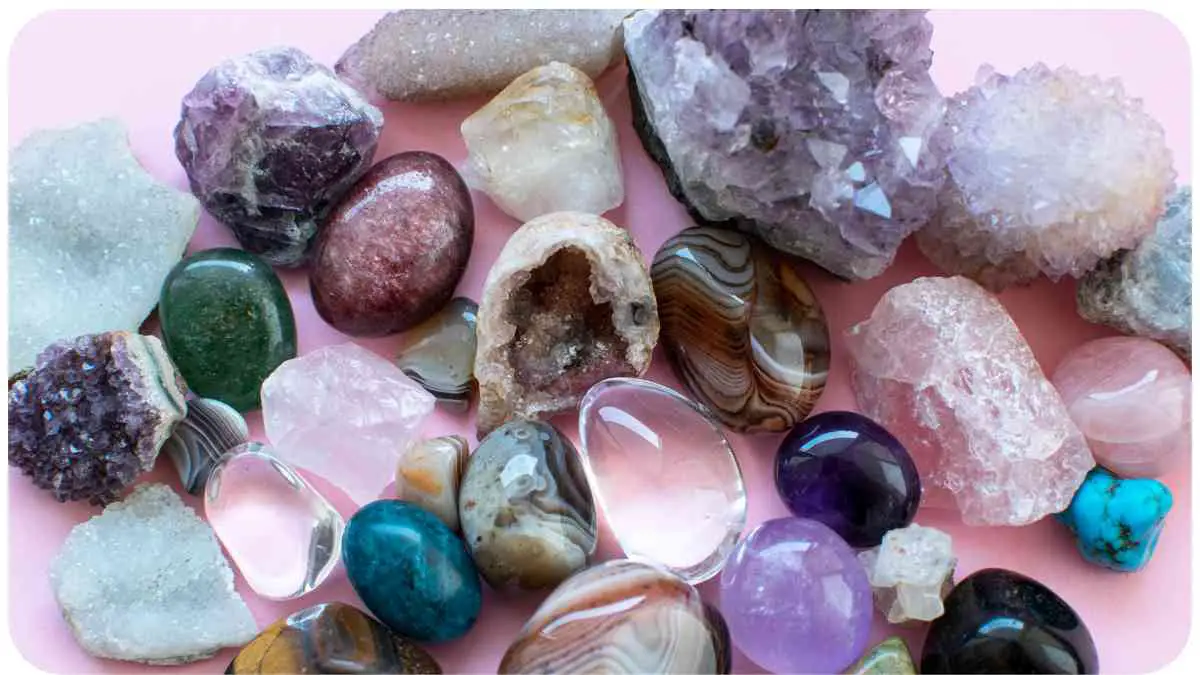Crystals have captivated mankind for centuries with their beauty and mystique. These remarkable geological formations come in various colors, each carrying its unique significance and energy. However, crystal enthusiasts often notice that their cherished crystals can change color over time.
In this article, we will explore why crystals may turn color and uncover the potential causes behind these transformations. Whether you are a crystal collector, enthusiast, or simply curious about the wonders of the natural world, this article will provide valuable insights and tips.
| Takeaways |
|---|
| – Crystals changing color or becoming cloudy can have multiple meanings and causes. |
| – Factors like sunlight exposure, chemical reactions, or energetic shifts can contribute to color changes. |
| – Understanding the symbolism of different crystal colors can provide insights into their energetic properties. |
| – Proper care and storage, such as avoiding direct sunlight and regularly cleaning crystals, can help maintain their color. |
| – Some crystals naturally change color, like chameleon quartz or alexandrite, adding to their unique appeal. |
Factors Affecting Crystal Color
Sunlight Exposure
One prominent factor that can cause crystal color changes is sunlight exposure. Just as the sun can fade the vibrant colors of furniture, fabrics, and artwork, it can also impact the hue of your crystals. Sunlight contains ultraviolet (UV) rays, which can break down the molecular structure of minerals present in crystals. This process, known as photochemical reactions, can lead to the alteration of their coloration.
To illustrate the impact of sunlight on crystals, let’s consider a clear quartz crystal. When exposed to direct sunlight for extended periods, the crystal may appear slightly cloudy or develop a yellowish tint due to the presence of iron impurities. It is vital to protect your crystals from excessive sunlight exposure to maintain their original color and energy.
For emotional healing, explore the profound properties of Rose Quartz. Discover how this crystal can gently aid in healing emotional wounds, bringing comfort and balance to your journey
Chemical Reactions
Another factor to consider is chemical reactions. Crystals are sensitive to changes in their surroundings, including exposure to various substances. The presence of chemicals, such as cleaning agents, perfumes, or lotions, can interact with the crystal’s composition, causing it to change color.
For instance, let’s take an amethyst crystal. When exposed to a chemical-based cleaning agent, the amethyst may lose its vibrant purple color and assume a pale or faded appearance. To prevent unwanted chemical reactions, it is essential to handle your crystals with care and minimize their contact with potentially harmful substances.
Environmental Factors
The environment in which your crystals are placed can also influence their color. Factors such as temperature, humidity, and air quality can impact the mineral composition and subsequent color changes in crystals.
When exposed to high temperatures, some crystals can undergo heat-induced transformations. This phenomenon may cause the crystal’s color to intensify or become less vibrant. Additionally, excessive moisture in the environment can lead to the growth of mold or mildew on the crystal’s surface, resulting in discoloration.
Understanding the environmental conditions in which crystals thrive is crucial for preventing color changes and preserving their beauty.
Understanding Crystal Color Changes

Oxidation
Oxidation is one of the key processes responsible for crystal color changes. When minerals within a crystal come into contact with oxygen, they can undergo chemical reactions that alter their color appearance. This process commonly occurs in minerals containing metal elements, such as iron or copper.
For example, consider a malachite crystal, which typically exhibits vibrant green hues. Over time, exposure to air can cause the formation of copper oxide on the crystal’s surface, leading to a shift in color from green to a bluish-green or even brown shade.
To prevent oxidation, it is advisable to store these types of crystals in airtight containers and limit their exposure to the surrounding atmosphere.
For emotional healing, explore the profound properties of Rose Quartz. Discover how this crystal can gently aid in healing emotional wounds, bringing comfort and balance to your journey
Heat
Heat is another factor that can influence crystal color changes. Some crystals are highly sensitive to temperature variations, causing their colors to shift when exposed to heat.
Take the case of rose quartz, a crystal known for its delicate pink hue. Intense heat exposure can cause the crystal’s color to fade or become more vibrant. To protect the original color of your rose quartz, it is recommended to store it in a cool and dry place, away from sources of heat.
Moisture
Moisture plays a significant role in crystal color changes, particularly when it comes to the growth of mold or the formation of mineral deposits on the crystal’s surface. Excessive moisture can lead to discoloration and the development of unsightly patches on the crystal.
For instance, let’s consider a citrine crystal, which is known for its warm yellow color. When exposed to a damp or humid environment, the citrine may lose its bright yellow hue and acquire a cloudy or brownish appearance.
To prevent moisture-related color changes, it is crucial to store your crystals in a dry and well-ventilated area. Avoid placing them near water sources or in areas prone to high humidity, such as bathrooms or kitchens.
Common Crystal Colors and Their Meanings
Understanding the meaning behind different crystal colors can provide valuable insights into their energetic properties and benefits. Here are some common crystal colors and their associated meanings:
Clear Crystal
Clear crystals, such as quartz, are known for their clarity and transparency. They represent purity, clarity of thought, and amplification of energy. Clear crystals can be beneficial for enhancing focus, promoting spiritual growth, and purifying the surrounding environment.
Blue Crystal
Blue crystals, such as blue lace agate or sodalite, are associated with calmness, soothing energy, and enhanced communication. They can aid in expressing oneself, promoting relaxation, and supporting emotional healing.
Seek insights at the junction of crystals and tarot with Understanding the Connection Between Crystals and Tarot. Uncover the symbiotic relationship between these mystical practices and harness their combined power.”
Purple Crystal
Purple crystals, like amethyst, symbolize spiritual wisdom, intuition, and inner peace. They are often used to enhance spiritual practices, stimulate the third eye chakra, and foster a deeper connection with one’s higher self.
Green Crystal
Green crystals, such as malachite or aventurine, represent growth, abundance, and healing. They are known for their balancing properties, promoting emotional well-being, and attracting prosperity and good fortune.
Yellow Crystal
Yellow crystals, like citrine or yellow calcite, evoke traits of joy, optimism, and self-confidence. They can assist in boosting creativity, manifesting abundance, and increasing personal power and motivation.
Each crystal color holds its unique symbolism and energy, which can enhance specific aspects of your life depending on your intentions and desires.
Tips for Preserving Crystal Color

Preserving the color of your crystals is essential for maintaining their aesthetic appeal and energetic qualities. Here are some practical tips to help you keep your crystals vibrant and beautiful:
- Avoid direct sunlight: Protect your crystals from prolonged exposure to sunlight, as it can lead to color fading or alteration. Store them in a shaded area or use curtains to filter the sunlight.
- Handle crystals properly: When touching or handling your crystals, make sure your hands are clean to prevent any transfer of oils or dirt that may affect their appearance. Use gentle movements to avoid rough handling that could damage the crystal surface.
- Store crystals safely: Invest in proper storage solutions for your crystals, such as individual compartments or padded boxes. This helps prevent scratches and keeps them away from environmental factors that can lead to color changes.
- Regularly clean your crystals: Dust and debris can accumulate on the surface of your crystals, affecting their color and shine. Clean them gently using a soft cloth or a mild cleaning solution specifically designed for crystals.
By implementing these tips, you can enjoy the long-lasting beauty and energetic properties of your crystals.
Cleaning and Maintenance Techniques
Proper cleaning and maintenance are essential to preserve the color and integrity of your crystals. Here are some techniques to keep your crystals in optimal condition:
Avoiding Direct Sunlight
As mentioned earlier, direct sunlight can lead to color changes in crystals. When displaying your crystals, ensure they are not exposed to direct sunlight for extended periods. If you wish to showcase them near a window, consider using curtains or blinds to filter the sunlight.
When it comes to authenticity, learn valuable tips and tricks for distinguishing genuine crystals. Navigate the world of gems confidently and gain mastery in identifying authentic crystals.
Handling Crystals Properly
When handling your crystals, it is crucial to be mindful and gentle. Avoid dropping them or subjecting them to rough handling, as this can cause chips, cracks, or damage to their surface. Treat them with care, like delicate treasures.
Storing Crystals Safely
Proper storage is vital for maintaining the color and condition of your crystals. Store them in a cool, dry place away from direct sunlight, excessive heat, or high humidity. Consider using individual cloth pouches or compartments to prevent scratching and protect them from the elements.
Regularly inspect your crystals for any signs of damage or discoloration. If necessary, consult a professional crystal expert for advice on repairs or restoration.
Immerse yourself in the cleansing ritual of sage with Cleansing Your Crystal with Sage: A Step-by-Step Guide. This guide reveals how sage can purify and reset your crystals, enhancing their energy and restoring their vibrancy
Recognizing Natural and Artificial Crystals
In the world of crystals, it is essential to distinguish between natural and artificial specimens. Natural crystals are formed in the Earth over long periods, while artificial crystals are created through human intervention. Here are some key differences to help you recognize natural and artificial crystals:
- Natural Crystals: Natural crystals often have unique imperfections, such as inclusions, irregularities in shape, or variations in color. These imperfections are a testament to their natural formation process, giving them a distinct character. They also tend to have a higher value due to their rarity and authenticity.
- Artificial Crystals: Artificial crystals are typically manufactured in laboratories and aim to replicate the appearance of natural crystals. They are often more symmetrical, have fewer imperfections, and display a uniform color distribution. Artificial crystals are created to meet specific demands or imitate rare and expensive natural crystals. While they may still hold energetic properties, they are generally considered less valuable in the crystal market.
When purchasing crystals, it is advisable to buy from reputable sources and educate yourself on the characteristics of natural crystals. This way, you can confidently select crystals that align with your preferences and intentions.
Conclusion
Crystals hold a special place in our hearts, captivating us with their beauty and energetic properties. Understanding why crystals change color allows us to appreciate their delicate nature and take proper care of them. Factors such as sunlight exposure, chemical reactions, and environmental conditions can influence the hue of our crystals. By following the tips provided in this article, you can preserve the color and vitality of your crystals for years to come.
Remember, whether you are a crystal enthusiast, collector, or someone curious about the fascinating world of crystals, taking care of your crystals is an opportunity to connect with their energy and beauty. So, cherish your crystals, and may their colors continue to inspire and uplift you on your journey of exploration and self-discovery.
Further Reading
Here are some additional resources you can explore to learn more about why crystals change color:
Crystal Agate Bracelets: What Does it Mean When Your Crystal Changes Color or Gets Cloudy?: This blog post discusses the potential meanings and causes behind color changes and cloudiness in crystals, providing insights and tips on how to interpret and address these changes.
Hibiscus Moon: Crystal Change Color: Hibiscus Moon’s website offers valuable information on the reasons behind crystal color changes, including factors like sunlight exposure, chemical reactions, and energetic shifts. It delves into the metaphysical and scientific aspects of crystal color changes.
AtPerry’s Healing Crystals Blog: Meaning of Crystal Changing Color: AtPerry’s Healing Crystals Blog explores the symbolic and energetic implications of crystal color changes. The article investigates the potential meanings and the significance of different colors in crystals, expanding on their transformative properties.
FAQs
Here are some frequently asked questions (FAQs) about crystal color changes:
Is it normal for crystals to change color over time?
Yes, crystals can undergo color changes over time. Factors like sunlight exposure, chemical reactions, and environmental conditions can contribute to these changes.
Can crystal color changes indicate energetic shifts or transformations?
In some belief systems, crystal color changes are believed to reflect energetic shifts or transformations. Each color may relate to different aspects of energy and consciousness.
How can I prevent color changes in my crystals?
To minimize color changes in your crystals, you can avoid direct sunlight, limit chemical exposure, store them properly, and maintain a clean and dry environment.
Can I restore the original color of a crystal that has changed?
While it may not always be possible to completely restore the original color of a crystal, taking preventive measures and providing proper care can help minimize further color changes.
Are there crystals that naturally change color on their own?
Yes, some crystals, such as chameleon quartz or alexandrite, are known for their color-changing properties. These unique crystals can exhibit different hues depending on lighting or viewing angles.

Hi, I’m Hellen James and I’m the founder of Unified Crystals. I’ve been working with crystals for years now, and it’s been an incredible journey. Throughout history, crystals have been valued for their ability to promote healing and enhance spirituality.


